LG 29EA93 Monitor Review - Rev. 1.25
by Chris Heinonen on February 12, 2013 8:49 PM ESTOnce again we are copying our charts from our Tablet and Smartphone workflow here for monitors. As I mentioned earlier, you can’t compare these to prior results due to the use of dE2000 for numbers. Another key change here is the ability to use meter profiling for doing measurements, which I’ll elaborate on here a bit to put these numbers into context.
There are two main types of meters: colorimeters and spectrometers. Colorimeters are usually cheaper, and use color filters to read the different colors of light. Spectrometers often cost more but actually “read” the light instead of using filters. This difference is key as color filters were very good when the only light sources were CRTs or CCFL lamps, but now with White and Multi-colors LEDs, and OLED displays, we have light with a different spectral makeup than before, which the filters are often not designed around. This can cause a colorimeter to have incorrect readings but a spectrometer will not.
The reason we don’t always use spectrometers is because they are much slower, and they read at low light much worse that a colorimeter. With meter profiling, you use a spectrometer and colorimeter to read colored patches from a display, and then the software analyzes the results. This creates a 3x3 correction matrix for the colorimeter that then allows it to correctly read the light from the display, even if it is LED or OLED based. The key thing here is this now allows us to read shadows better, and do more readings to produce better results.
The main area of difference here is going to be in blues. Compared to 100% White, 100% Blue has only 7% of the light output, making it very dim. This makes it harder to read for a spectrometer, which makes it more prone to error. Now that we can use a profiled colorimeter to make this reading, and in my case use a C6 meter that can average 10 results at a time to produce a more accurate number, our blue numbers may be different than before, but they will be more accurate.
| Pre-Calibration | 200 cd/m² Target | 80 cd/m² Target | |
| Primary and Secondaries dE2000 | 2.3002 | 1.4839 | 2.0847 |
| Colorchecker dE2000 | 2.1689 | 1.0185 | 0.9915 |
| Saturations dE2000 | 1.7017 | 1.0126 | 1.1254 |
With that out of the way, we can look at the CIE gamut chart and see that the LG 29EA93 has a bit more than the sRGB gamut available, with reds and greens that extend beyond the CIE triangle. Pre-calibration our numbers look very good, but with a bit of over-saturation in the reds and greens. The 200 cd/m² calibration numbers look better than the 80 cd/m² when it comes to the CIExy chart, but frankly I’m more concerned with the color checker and saturation charts. Most people only focus on the CIE chart, but it really just shows the performance of 6 colors and the size of the gamut, but tells you nothing about the performance of the other 16.7 million colors you might use.
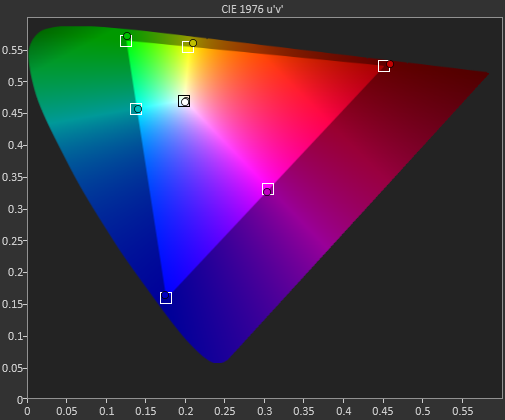
Pre-calibration, the dE2000 number for the Color Checker chart is quite good on the LG 29EA93. Until we have more monitors done with the new workflow we can’t be certain of how good this is, but overall it does look very nice. The main issues are in pure white, and those Yellow-Red-Green tones that fall at the edge of the gamut. The bit of over-saturation that we saw earlier causes these to be a bit too-rich and leads to some visible errors there.
After calibration, only those over-saturated colors provide anything to care about at all. Beyond those four points, the other 20 samples are nearly perfect, with no visible error at all even in blues. If those final four points were perfect there would be nothing to complain about at all with the LG 29EA93, but even with them it produces overall dE2000 numbers that are fantastic.
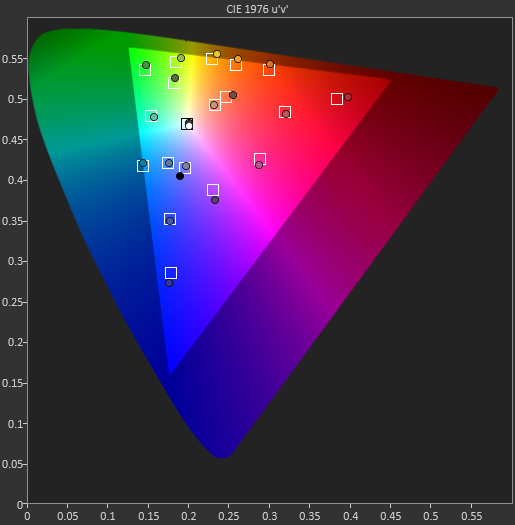
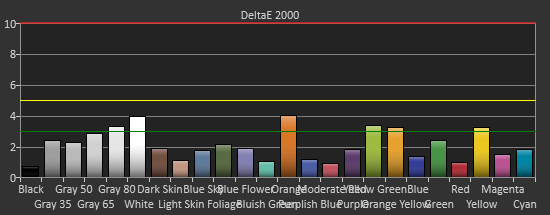
Pre-calibration, the saturation numbers for the LG are good, but you can see quite a few of the measurements are at or close to the dE2000 3.0 mark. Post-calibration this improves, especially the 20% data, with only the 100% green and yellow color swatches measuring over 3.0, and only four measurements total over a dE2000 of 2.0. The calibrations push the saturation measurements from good to excellent.
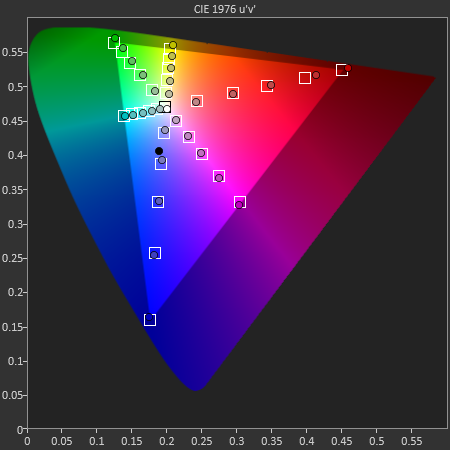
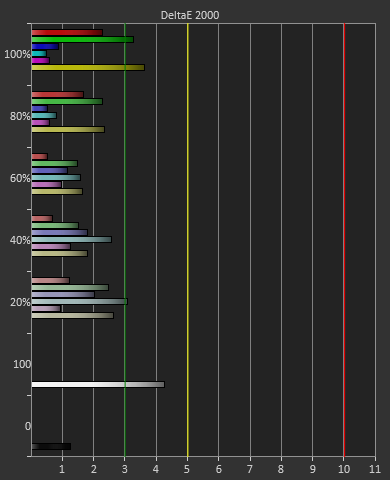
Taking these measurements in full, it seems that after calibration, the only place you will see any color errors on the LG 29EA93 is in a fully saturated red, green, or possibly yellow. As soon as the saturation drops below 100% the error level drops drastically, and you won’t be able to see an error at all. Unless you start at a pure-red screen all day long, the color of the LG 29EA93 is going to be very impressive.











108 Comments
View All Comments
cheinonen - Thursday, February 14, 2013 - link
Since there seems to be a lot of feedback from those worried about the fact that LG provided a new sample that tested well, I decided to add some more comments about the matter, and clear some things up.- The first sample was also hand delivered by LG to me. Every monitor sample I have had has been from a PR company or a company directly, and none of them have been bought by myself.
- If it was so easy or even possible to hand-tune a sample to have the performance offered by Rev. 1.25 of the 29EA93, then wouldn't we expect every monitor that comes in for review to be that good? As it is, samples arrive that perform good and bad. You can look at the Acer monitor that was just reviewed to see it had issues (I had to manually loosen a screw to get the stand to work correctly, which they said would be fixed) and wasn't hand-tuned.
- You can also look at my Nixeus sample that had a brightness control issue, or many other display reviews that have been published. If it was so easy to game the system, every vendor would do it.
- Buying samples just isn't realistic. Most displays arrive for 30 days at most before going back to a company. Many arrive well before the street date so that reviews can be completed and published on the release date. This isn't possible if you need to purchase units, besides being cost prohibitive. Yes, some places would let me return them, but I have ethical issues about buying something I know I'll return, and then they will have to sell at a discount.
If I thought what LG was doing was in any way biasing my coverage, I wouldn't do it, but what they have done as far as providing samples is no different than any other company. What is different is their taking feedback and using it in a positive way, whereas many other vendors might try to deny the findings or just cut off communications, both of which have happened to me before. Being skeptical is fine, but I find no reason to think that LG wanted to anything else other than make a better product than they initially released, and providing the display to me is not different from the normal review process in any way at all.
5150Joker - Saturday, March 23, 2013 - link
Chris, LG should provide some of us a clear route to firmware upgrades that have purchased their displays. That I think is the chief concern among many of us that are concerned about buying an older version. If they were to release the updated firmware on their website in a reasonable time frame (say 1 month from now) with an easy path to upgrade, then nobody would be worried. As it is now, there is no way to differentiate between the older and newer model. This isn't limited to this model either, the LG 27EA83-D has the same problem. A korean website (www.playwares.com) was hand delivered a tuned unit and their lag tests were phenomenal. Unfortunately, I'm one of the people that already owns the 27EA83-D and would hate to be left out in the cold w/an early firmware. LG has a responsibility to clarify and rectify this situation for its customers.avihut - Thursday, February 14, 2013 - link
I was wondering which resolutions does the screen support?I mean does it only support the optimal 2560x1080 at this ratio or does it have something equivalent in the area of 1920x800 or even lower. My machine won't be able to do 2560x1080 on all my games, so I want to know if I'd be able to fall back on lower res but still get the same ratio.
Awesome review. Looks like a superb display.
cheinonen - Thursday, February 14, 2013 - link
With non-native resolutions you can have them scale to fit the screen, or do 1:1 pixel mapping for them.avihut - Friday, February 15, 2013 - link
But will the ratio preserve or will I have to play in letterbox mode?I wouldn't want to stretch 1920x1080 on this screen, since everything will look, well, stretched.
SpartanGR - Thursday, February 14, 2013 - link
How can we tell the diff between the old and the new one if i want to buy it?SpartanGR - Thursday, February 14, 2013 - link
Why can't we just firmware update our monitors? sigh....sheh - Thursday, February 14, 2013 - link
The start of the firmware-upgradable-monitor era? :) "Hey, I just overclocked my monitor using RadFirmware! Plus, scaler mode selection!"Why would TV-range chroma/luma affect contrast? It's supposed to be displayed expanded to the full range, no?
What quality differences are there in game mode?
Anyway, not the monitor for me. Waiting for some 3840x2400 24" 120Hz. OLED wouldn't hurt either, but that can wait another year or two.
cheinonen - Friday, February 15, 2013 - link
When calibrating for TV/Blu-ray/non-PC video, 16 is video black and 235 is video white, as opposed to 0 and 255 with PC content. The monitor shouldn't expand this, so you're calibrating to a smaller range. You can find some devices that will expand video content to the full RGB range (often labeled as RGB Full) that would then use the 0-255 range. For standard video content you only use a subset of that, so you'll have less dynamic range compared to PC.The PC mode was certainly bluish, with a higher color temperature, with fewer adjustments available in order to remove processing lag.
sheh - Saturday, February 16, 2013 - link
That's odd. I'd expect monitors in "TV mode" to expand 16-235/240 to 0-255, just like decent PC software players/decoders. Or maybe whatever feeds the video should do that. Or more like, either one, depending on the settings you select.Well, thanks.